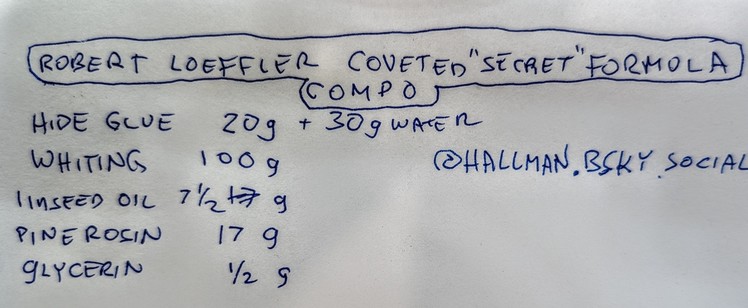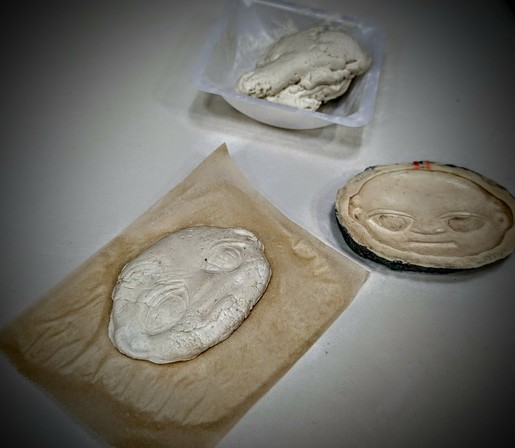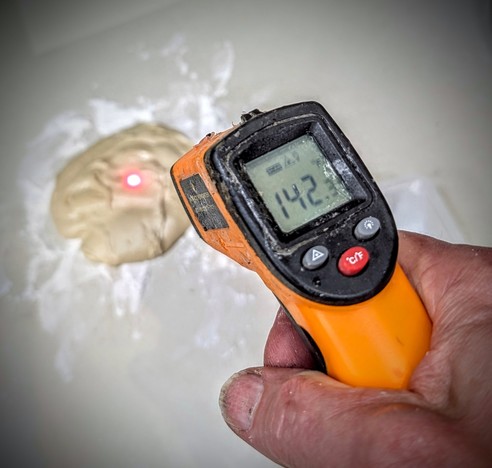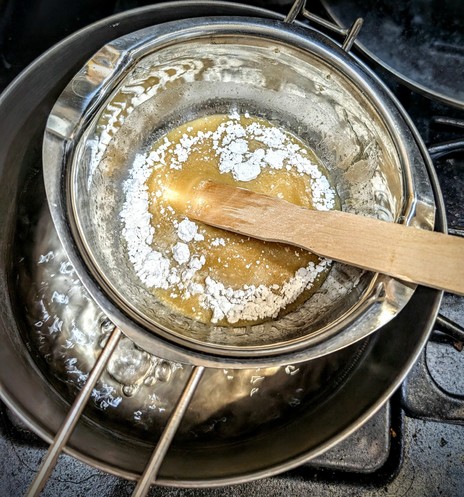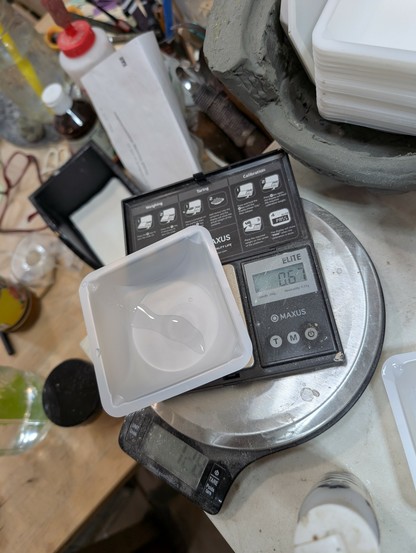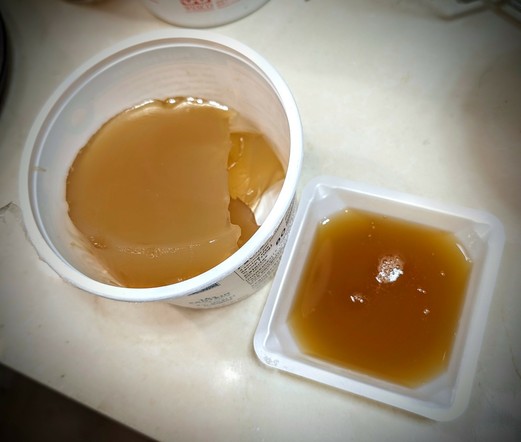Here's a picture of the recipe, taken from Robert Loeffler. #DIYCompo
Recent searches
Search options
#DIYCompo
Real Compo craftsmen use hydraulic or screw presses to shape the putty into ornamental molds to shape the molding pieces. These pieces then are steamed to make them malleable and adhesive, so they can be assembled into moldings. I'm just using a rubber mold to test it now. #DIYCompo 8/8 fin
I dropped the dough ball onto the marble countertop because the recipe says to knead it. But WOW! this stuff is sticky at this temperature! I didn't take a photo of my gooped up fingers. Learning lesson, the kneading action takes some skills I still need to figure out. #DIYCompo 7/
The bulk of Compo is finely powdered gypsum chalk, essentially the process is similar to kneading together bread dough. (But it is extremely sticky when warm.) Stirring it together and it is about 140⁰F at this point. I'm also thinking about using Kaolin instead of gypsum. #DIYCompo 6/
Next, the recipe calls for a few drops of vegetable glycerin. This recipe comes from the ultra rare book by Robert Loeffler and he learned the recipe from an old Compo craftsman in the early 20th Century who learned it from Victorian era craftsmen. (Shhhh, the glycerin is a secret!) #DIYCompo 5/
Compo is a thermally activated molding compound. Traditionally it was used extensively during the Victorian era for ornamental molding. The process was seen as a trade secret, so today it is a lost art, but it is still used for making ornamental picture frames. #DIYCompo (read the ALT photo text)2/
For the #mARTch, #makersMARTch and #ArtYear theme of #Glue, I am going to experiment making some #DIYCompo traditional molding compound. Compo is famously used for 'composition molding' that you know if you have seen ornate antique picture frames, etc.. The 'glue' is gelatin hide glue. A thread1/


